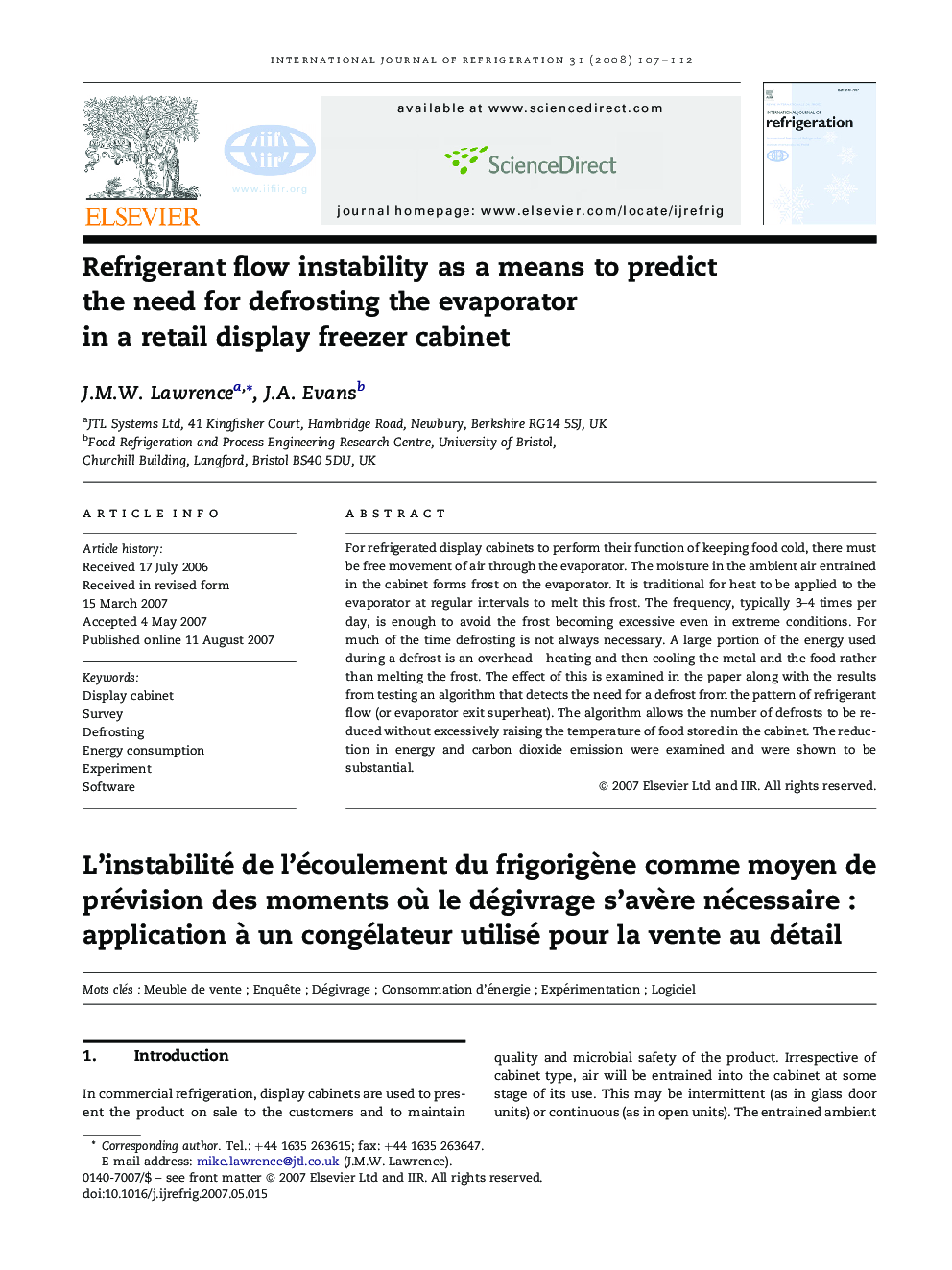| Article ID | Journal | Published Year | Pages | File Type |
|---|---|---|---|---|
| 789975 | International Journal of Refrigeration | 2008 | 6 Pages |
For refrigerated display cabinets to perform their function of keeping food cold, there must be free movement of air through the evaporator. The moisture in the ambient air entrained in the cabinet forms frost on the evaporator. It is traditional for heat to be applied to the evaporator at regular intervals to melt this frost. The frequency, typically 3–4 times per day, is enough to avoid the frost becoming excessive even in extreme conditions. For much of the time defrosting is not always necessary. A large portion of the energy used during a defrost is an overhead – heating and then cooling the metal and the food rather than melting the frost. The effect of this is examined in the paper along with the results from testing an algorithm that detects the need for a defrost from the pattern of refrigerant flow (or evaporator exit superheat). The algorithm allows the number of defrosts to be reduced without excessively raising the temperature of food stored in the cabinet. The reduction in energy and carbon dioxide emission were examined and were shown to be substantial.
